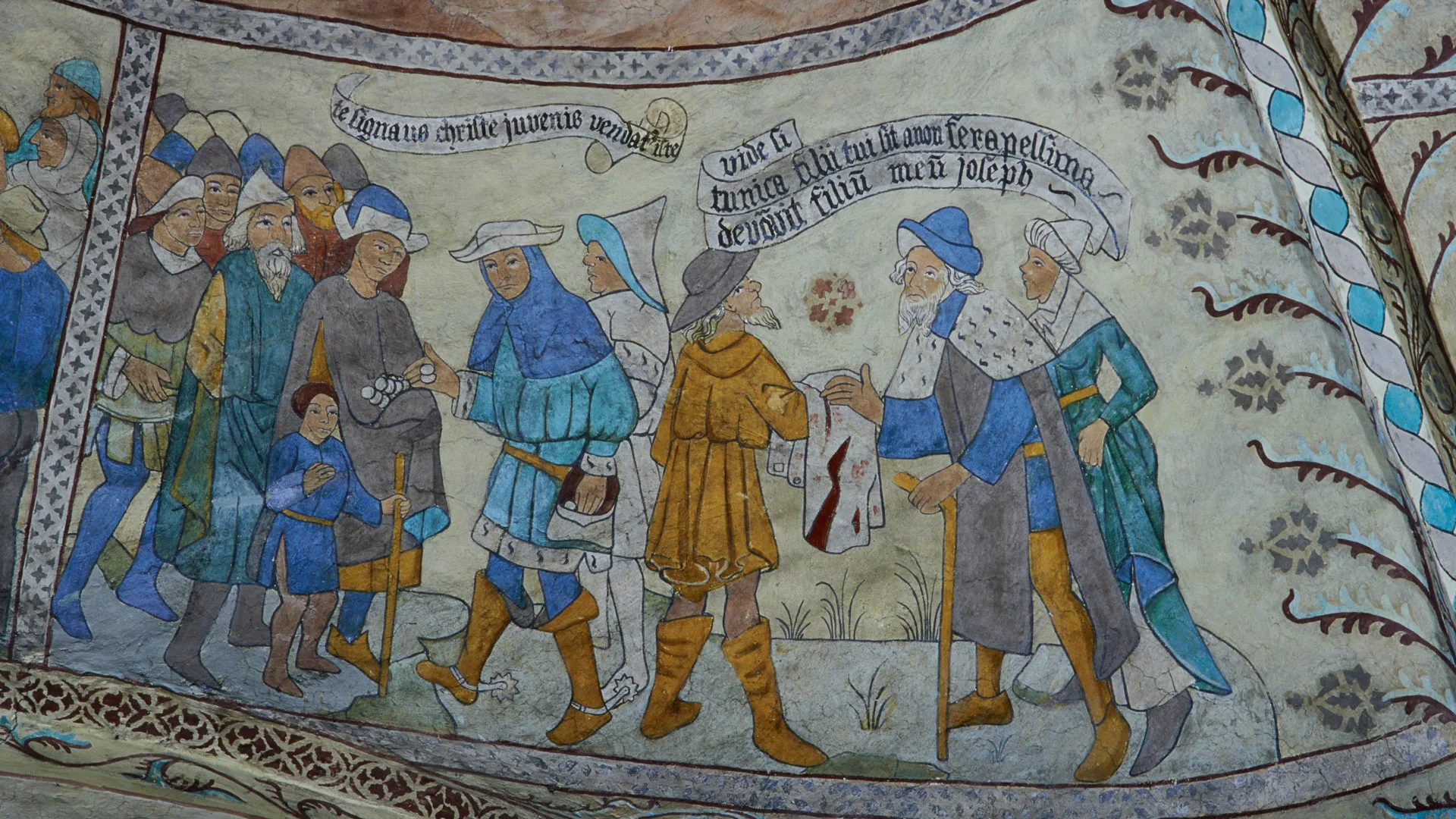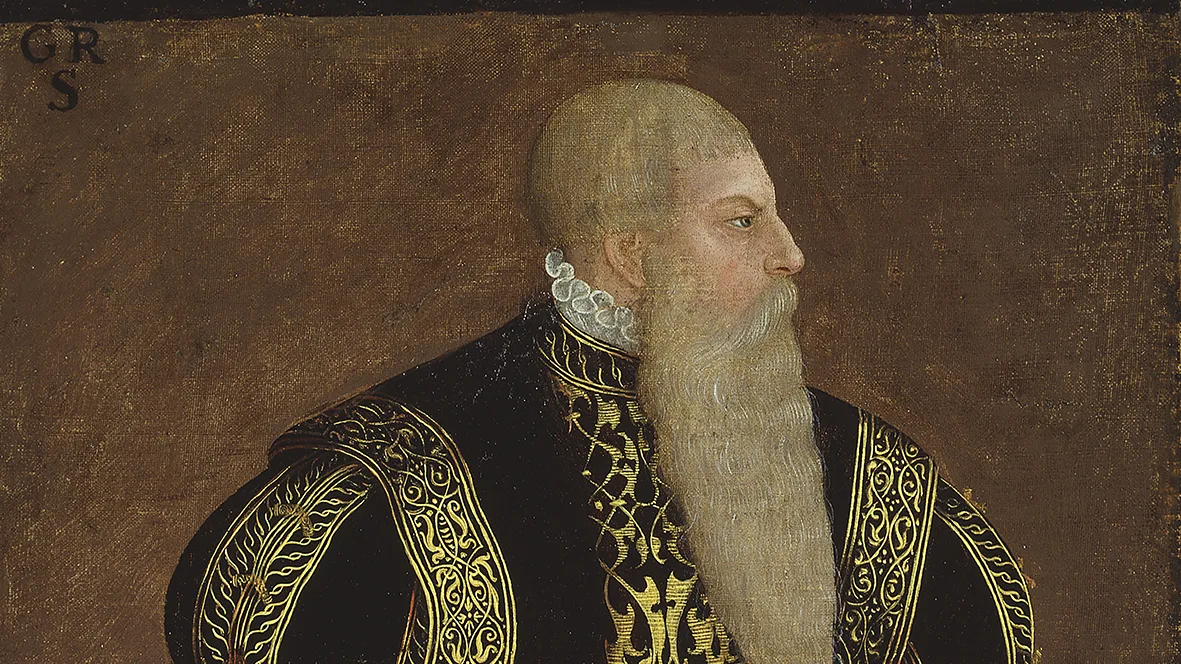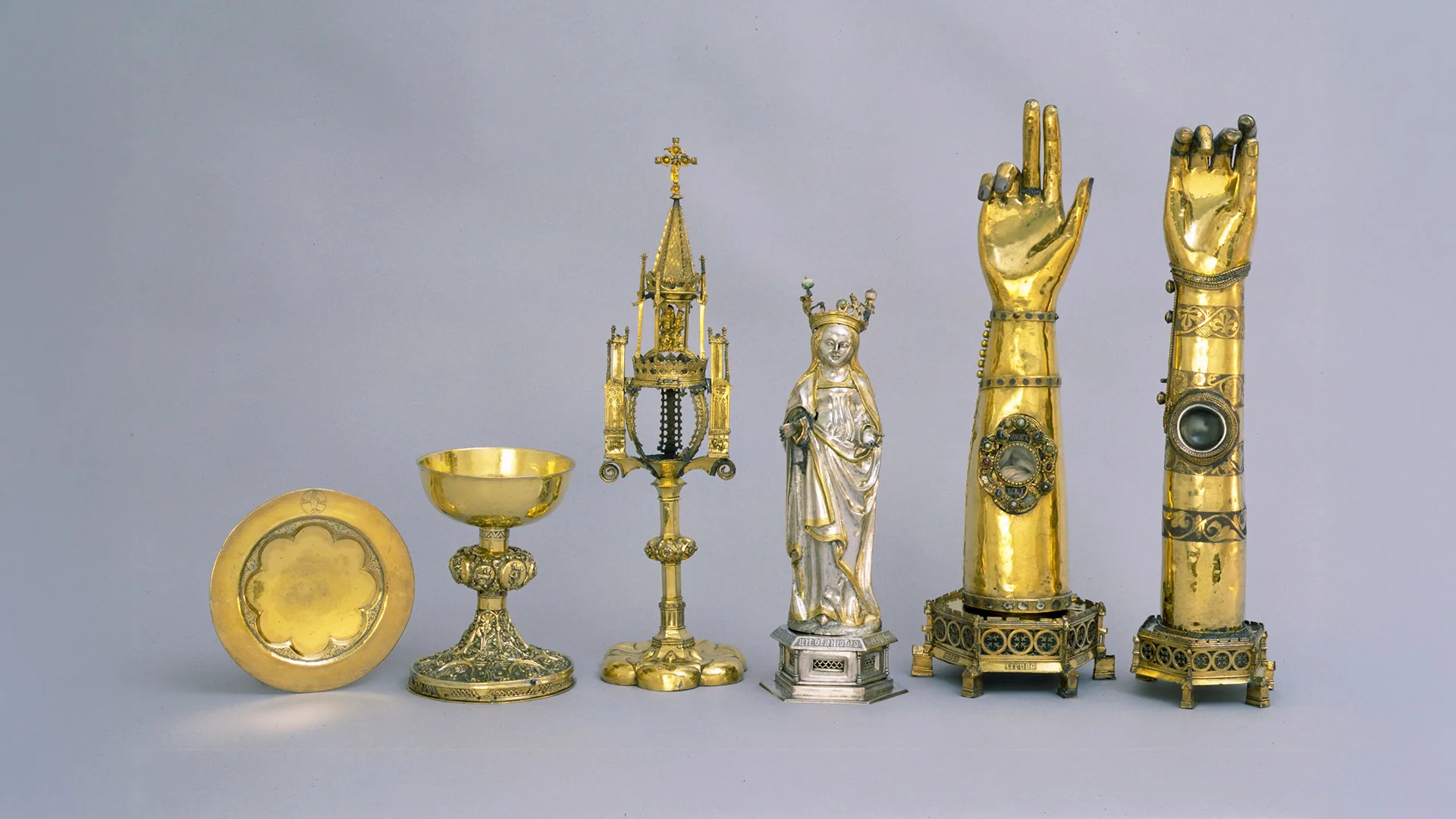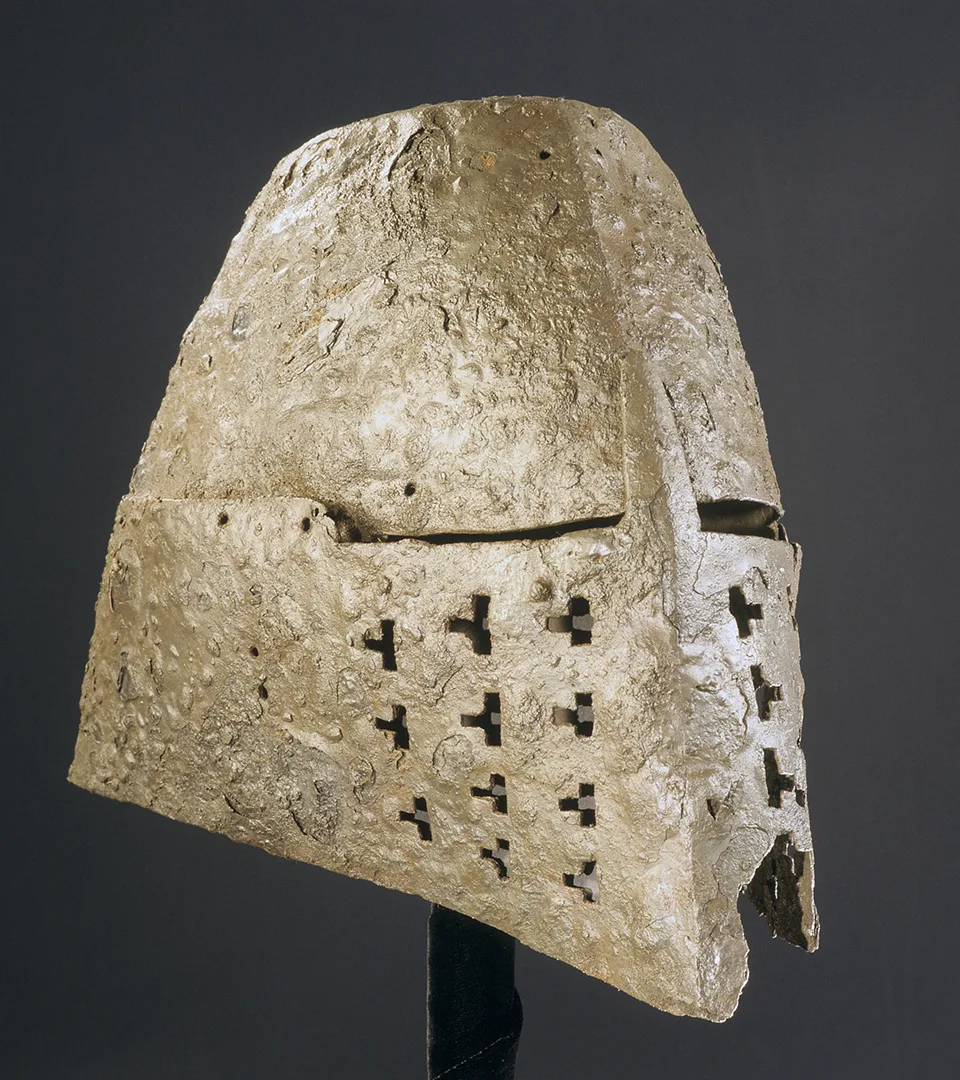The mystery of the crown case
Viking Age
AD 800 – AD 1100
Middle Ages
AD 1050 – AD 1520
Modern Age
AD 1520 – AD 2025

The crown case is adorned with plant motifs, figures, and a so-called Wheel of Fortune. This was a common medieval symbol, reminding the viewer that worldly fortune is only ever temporary. Other depictions include a symbolic king, the blessing Christ, and the Madonna with the Child. Birger Jarl’s seal appears three times, accompanied by a Latin text meaning roughly “Seal of Birger the Second, by the grace of God Prince of Sweden.” It was because of this that the object came to be known as Birger Jarl’s crown case.

Crown case
On view at Historiska museet in the exhibition Sveriges historia
How old is the crown case?
Experts believe the case was made in the first half of the 14th century. This dating is based on the style of the decoration, rather than the seal, since the motifs became fashionable in the early 1300s.
A medieval church bell in the museum’s collections bears an identical image of Christ, and a small wooden casket covered with leather features partially identical decorations. All of this points to the crown case having been made in Sweden at some point in the Middle Ages.
If it is indeed a case for a royal crown, the likely owner would have been either Birger Magnusson (1280–1321) or Magnus Eriksson (1316–1374).
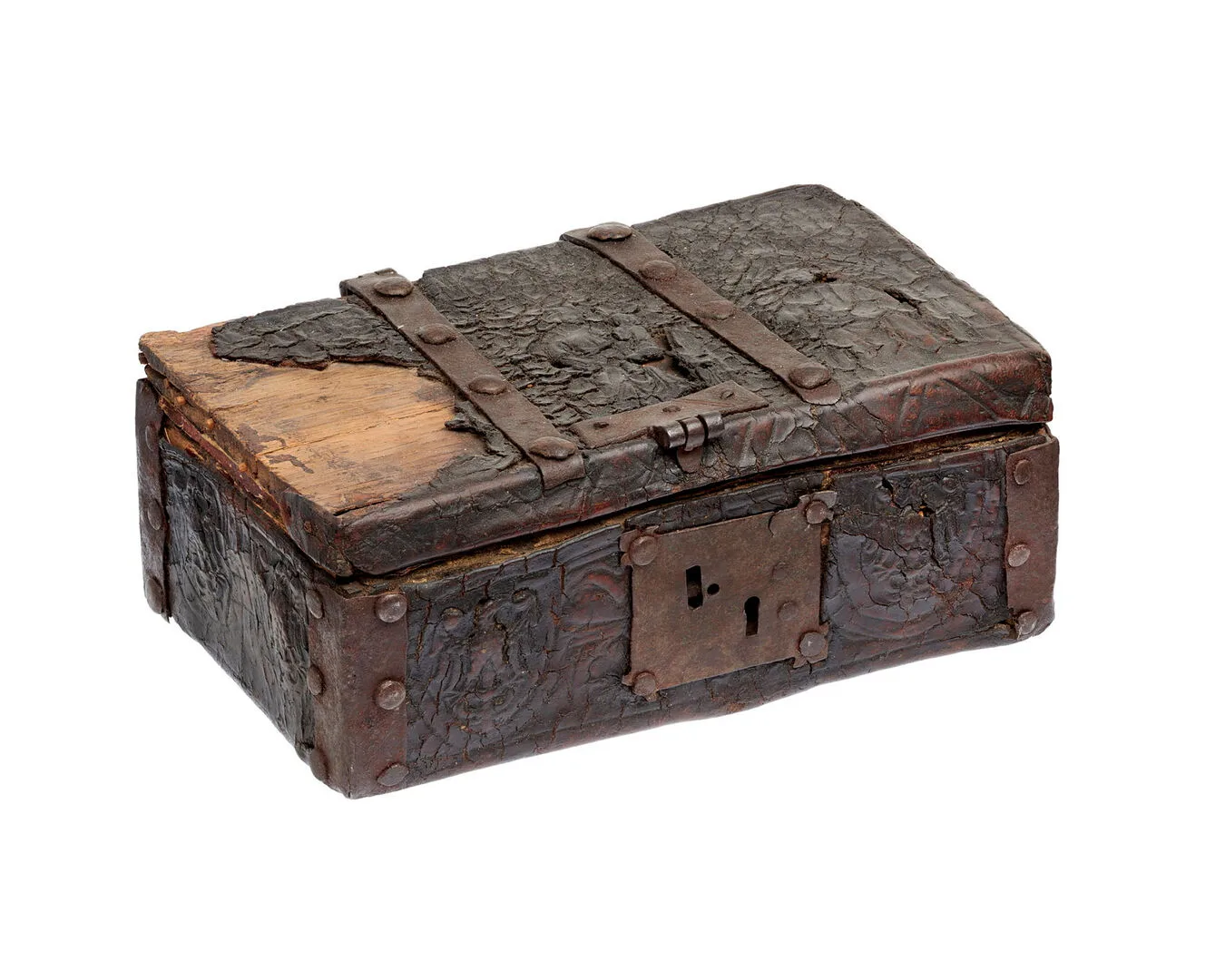
Box
But what exactly is it?
The problem is that the case cannot be securely linked to any one individual. The seal says Birger Jarl, yet the decoration suggests it is almost a century younger. Moreover, the ornaments are not typical of those used on a royal crown.
What scholars do know is that the crown case, the church bell, and the small wooden box share identical ornamentation. The bell has a proven connection to Vätö Church outside Norrtälje.
The so-called Birger Jarl’s crown case is also small in size. For this reason, some researchers believe it may once have contained a crown belonging to a woman.

A church bell
On view at Historiska museet in the exhibition Medeltida klanger
Who owns the case today?
Culemann presented the case to the Kestner Museum in 1887. Because of its apparent link to Birger Jarl through the seals, Swedish curators were eager to acquire it. After many lengthy negotiations, the Swedish History Museum finally secured the object. As the Kestner Museum has lent it indefinitely to the Swedish History Museum, a medieval bishop’s crozier made of bone is lent, in turn, to Hanover.
So, the question of who once owned the crown case – and even who owns it today – remains somewhat unresolved. It is a case that holds no crown, but plenty of mysteries.
